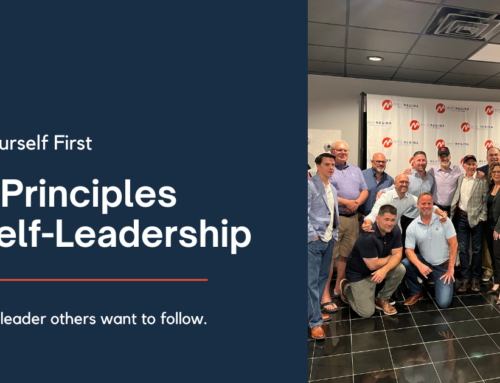
Things go wrong.
At the beginning of any new opportunity, plan or venture, we readily assume that we will be completely successful. We feel positive, encouraged, and excited to enact our well thought-out vision.
But, sometimes, no matter how well we prepare, unforeseen circumstances can enter the picture. Things just don’t go as we thought or planned. And, then we may question ourselves. We may wonder why we didn’t anticipate every challenge. We may fall into a trap of blame, negativity, and doubt. We may start pointing fingers at ourselves and others. And, we may behave in ways in which we aren’t proud.
I have had many situations where I have felt frustrated when things don’t go as planned.
We come to a crossroad when we’re faced with two options. Do we react from a place of patience, self control and calmness, or from a place of anger, resentment and blame? The next action is our choice.
I know it is a lot easier said than done to have self control in the midst of a challenge. We all want to think we will come from a place of self control when things go awry. But do we really? Practicing equanimity will be your number-one ally dealing with situations that go wrong. Equanimity is a conscious state of mental and physical calmness and composure during highly stressful situations.
Like everything regarding our professional growth, self awareness is vital. Remember these 3-R’s as a cornerstone in facing challenging news or dealing with the unexpected:
- Recognize
- Reset
- React
Recognize
- Become self-aware. Being conscious about your thoughts, behaviors, and reactions is critical not only in business but in your entire life.
- Be kind to yourself. Self-judgement, guilt, and shame will only bring negativity to yourself and the situation. Negativity does not help anything or anyone. You want to find positive, affirming solutions.
- Step away. Sometimes we just need to walk away from a situation to recharge and see things differently. Disengaging mentally and physically from heightened situations can diffuse the intensity and give you a new, fresh perspective.
Reset
- Take a moment to reset. Whether this is breathing, prayer, or meditation, put aside time to tap into your spiritual side. Taking this moment to reset will bring you calmness to avoid acting out of anger or fear.
- Exercise can be vital during the reset stage, even if you only have five minutes. Use those five minutes to take a walk. Physical activity is a great way to work out negative feelings.
- Ground yourself. Detach yourself from the situation without blame and analyze with a fresh set of eyes. This is the time for a solution, knowing that in the future you can reflect on what went wrong to learn from past mistakes.
- Forgive. We all will make mistakes, and we need to forgive ourselves and others, freeing any toxic thoughts or negativity. When you forgive, you are able to have more bandwidth to formulate a positive solution with rational thinking.
React
- Focus on your Sphere of Control. We cannot control anyone; we can only control ourselves. Stop carrying what the other person is projecting. The goal of equanimity is to train ourselves to avoid emotional highs and lows during stressful times. Consciously focusing on evenness is crucial, all of which you can choose to control.
- Listen to understand. Practice deep breathing when others are speaking to manage your impulses. Also, you will be able to hear what others are saying to which may lead to a path of solutions.
- Do not fight fire with fire. Watch out for anger or hostility in yourself and others. We all know that will just escalate a heightened situation. Calm minds always prevail. If there are issues to deal with others, address them when the situation is diffused. Again, practice conscious deep breathing.
- Find a solution. Finally, when you are on the other side, non-judgmentally reflect and assess what went wrong. Use this assessment as a learning tool: a roadmap for the future, allowing yourself to ask questions that you may have not foreseen in the past.
Ways to practice calmness by checking in with yourself physically:
- Deep breathing. This is the first step when faced with a stressful situation. Daily, conscious practice of controlled breathing will help make it a habit when you need it most. Deep breathing will slow you heart rate, reduce anxiety and help clarify thoughts.
- Keep a genuine smile on your face; you can think more clearly. Very simply put, we all react to a smile instinctively. Not only will it put you in a more positive state of mind, but others will react similarly.
- Keep voice lower. We tend to raise our voices when we are in heightened states of emotion. Consciously go the other direction. Not only will it calm you down, but it can also bring others down to a more rational state.
- Speak slowly. Same as lowering your voice, at times when emotions run high, words can come out at a rapid-fire rate. This increases the rate of our analytical skills, which in times of stress already is working over time. Control the rate of your communication and allow yourself — and others — to think.
- Clasp your hands behind your back and stand or sit still. We can express emotions through our physicality. The goal of equanimity is to reduce all impulses, including in our body.
We will get blindsided at times. We need to remember that this is part of the human experience, and it is ok. However, how we react, behave, and move forward is completely up to us.
Things are going to go wrong. That you cannot control. You also can’t control how others will react. But the great news is that we can control ourselves!
Practicing equanimity will prepare you to react more calmly when the unexpected happens. And trust me, it will happen. Prepare well on your end, learn from the mistakes, and embrace the unpredicted. Your future self will thank you for it.





